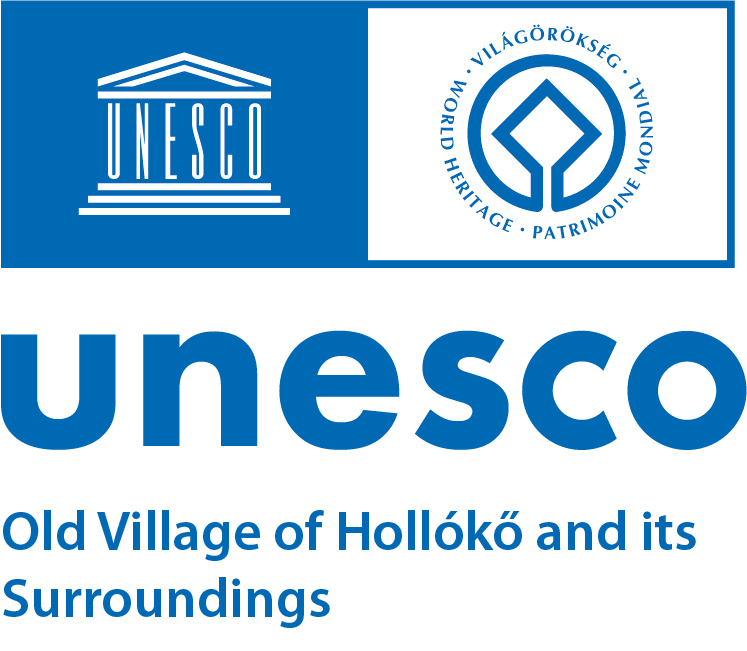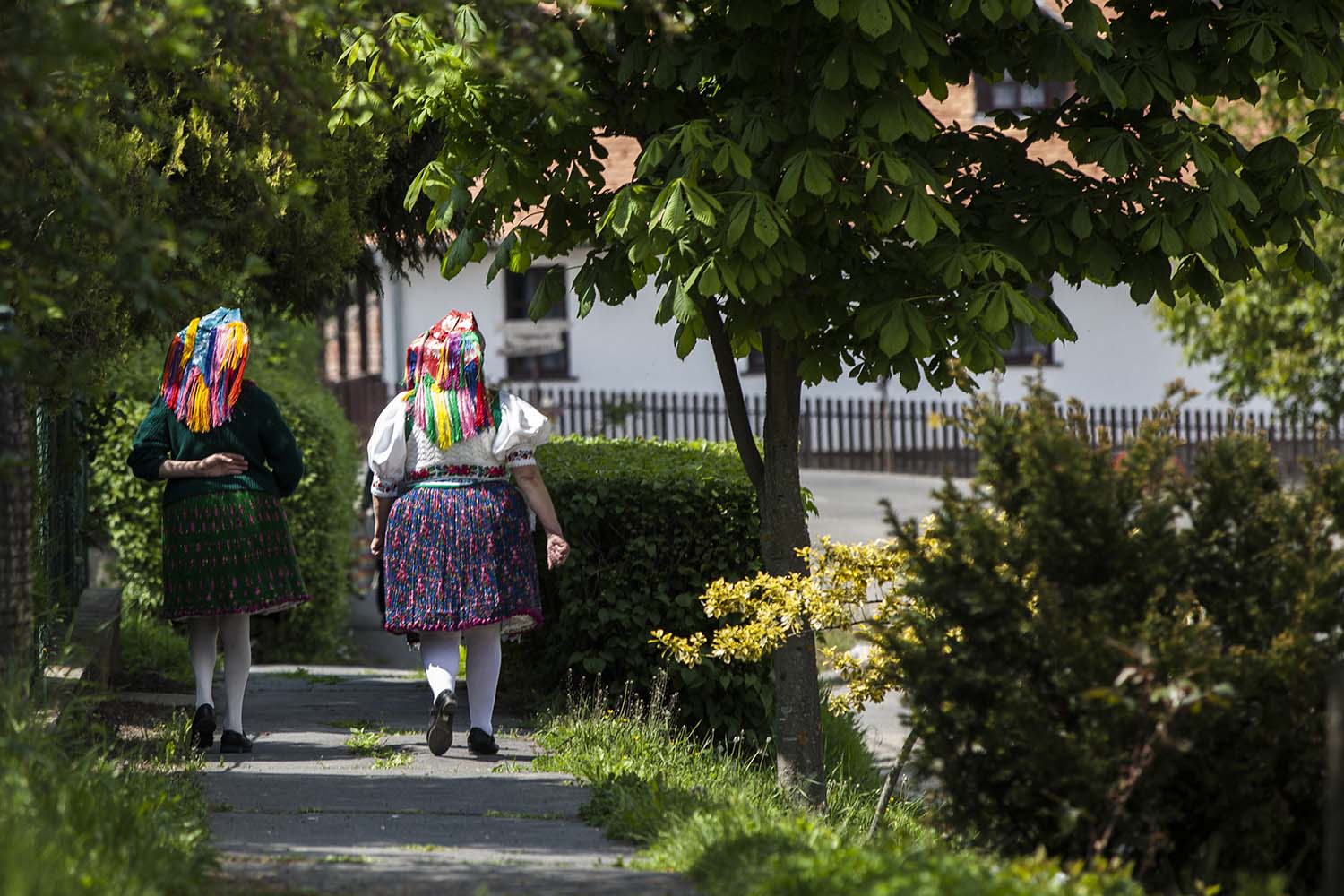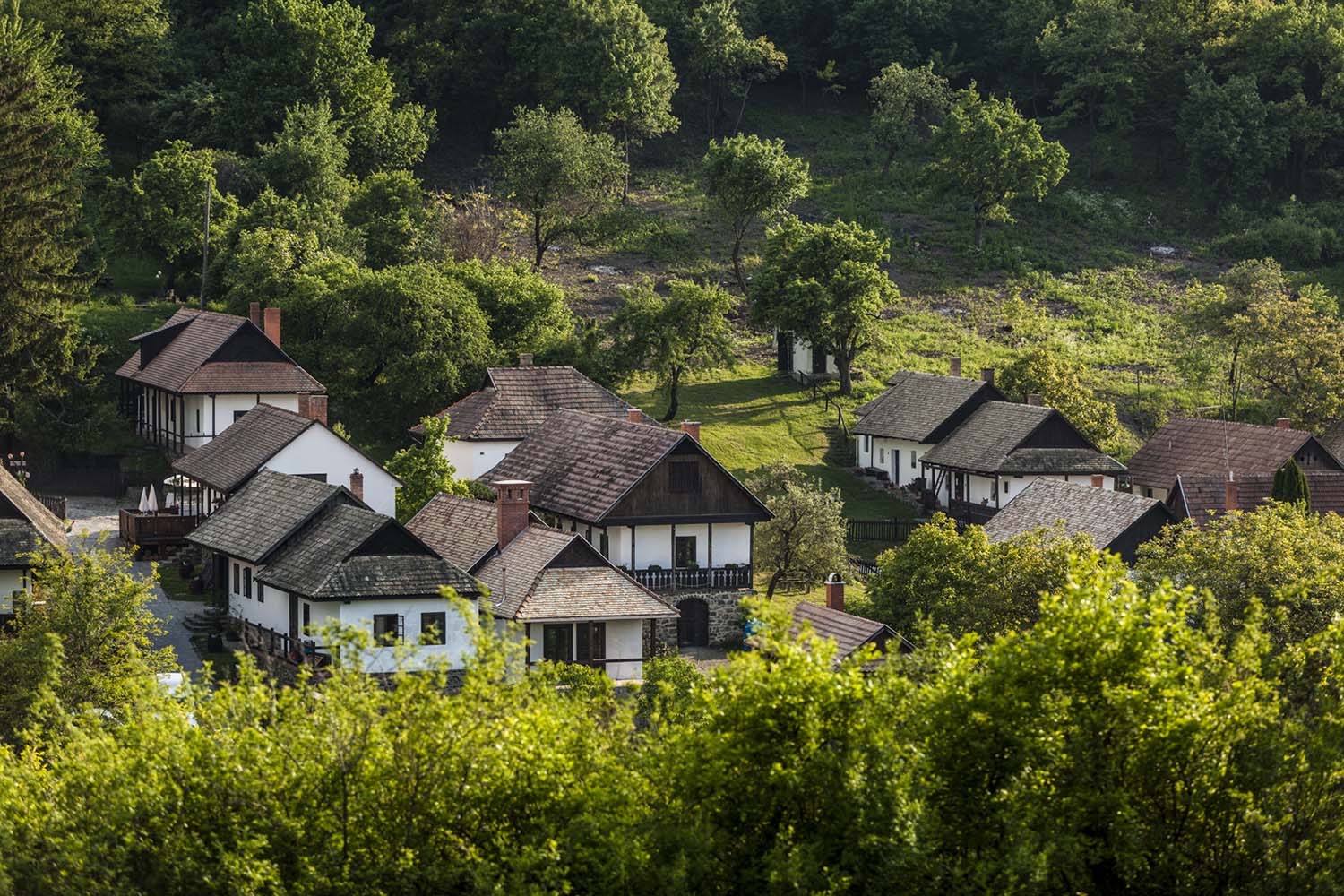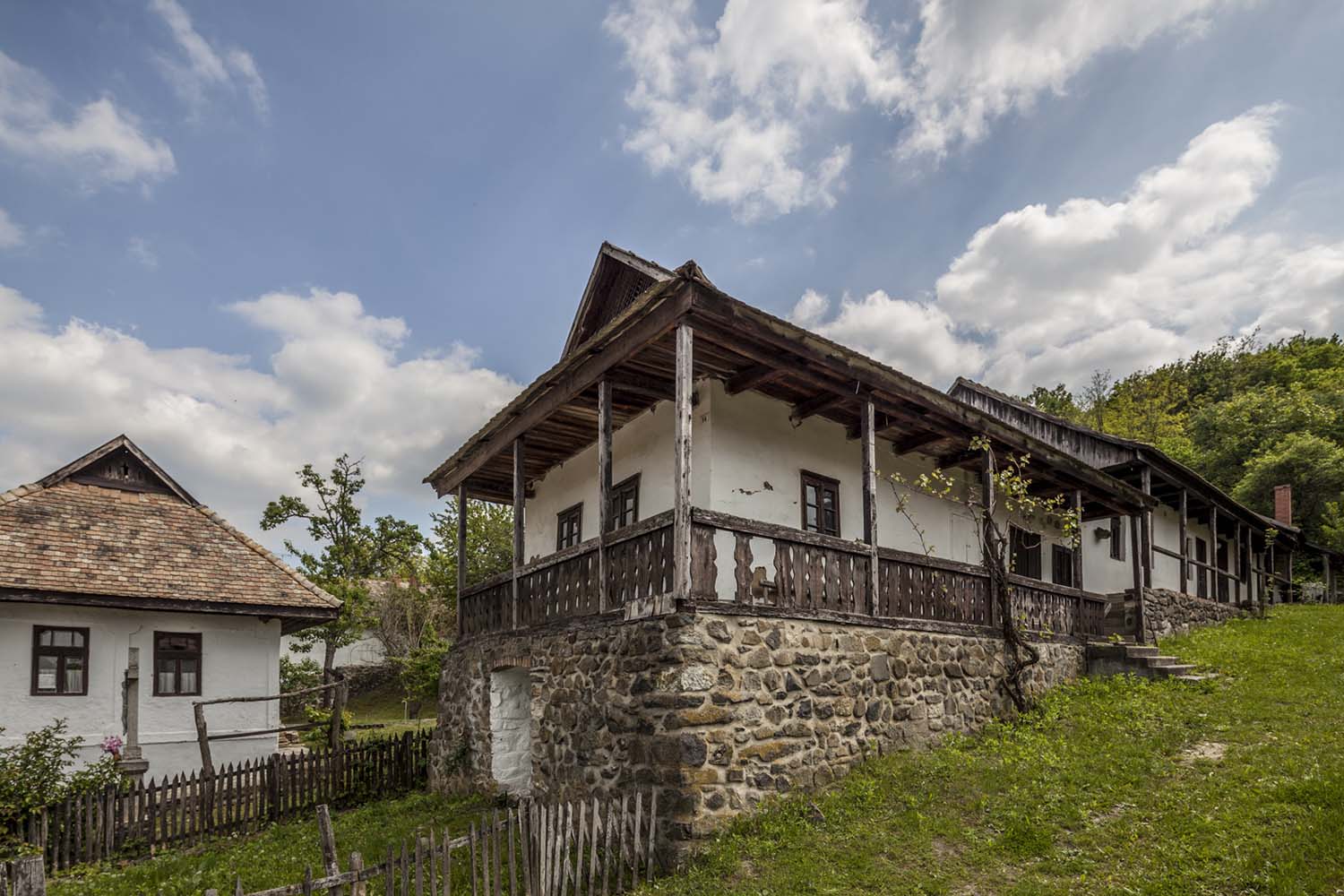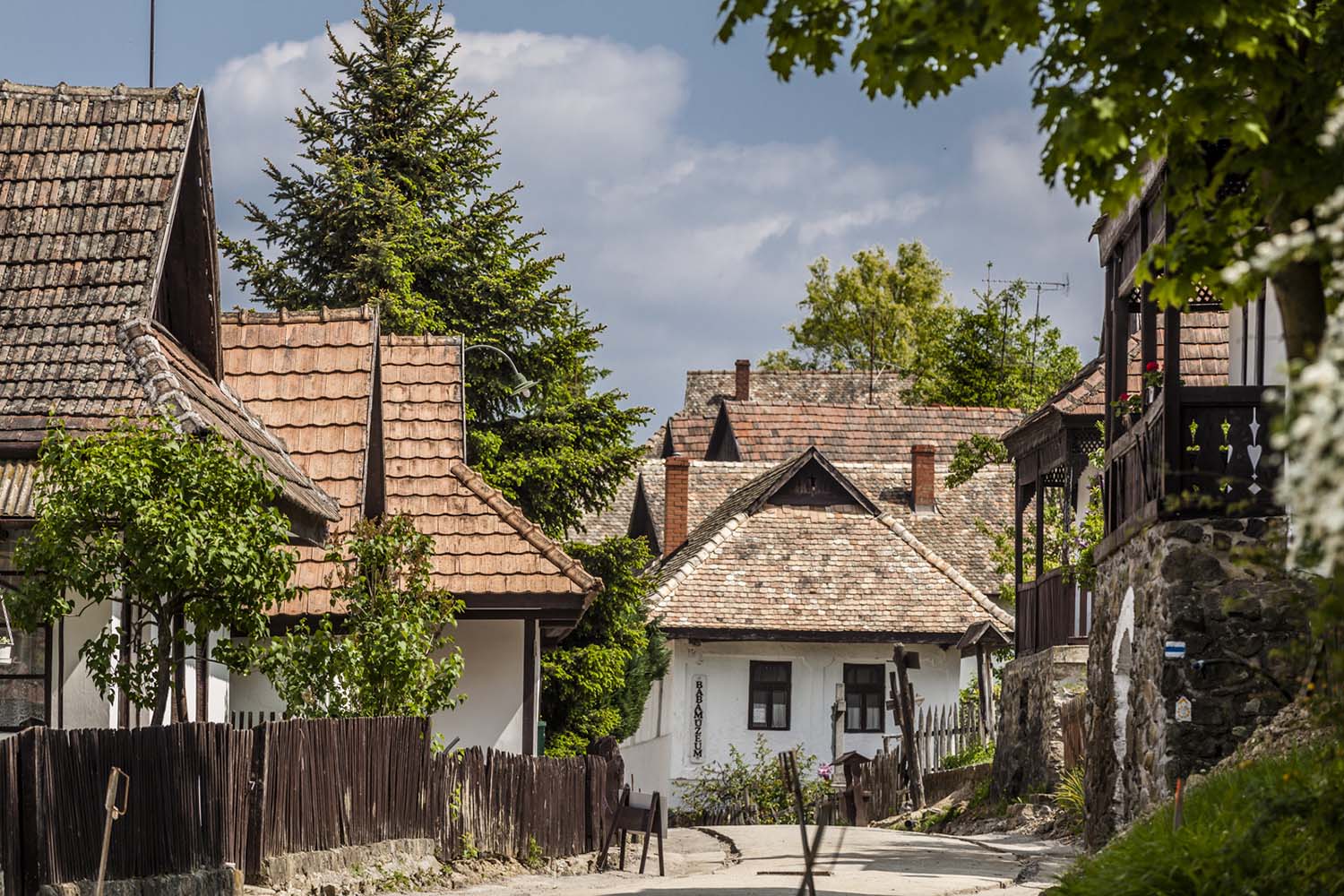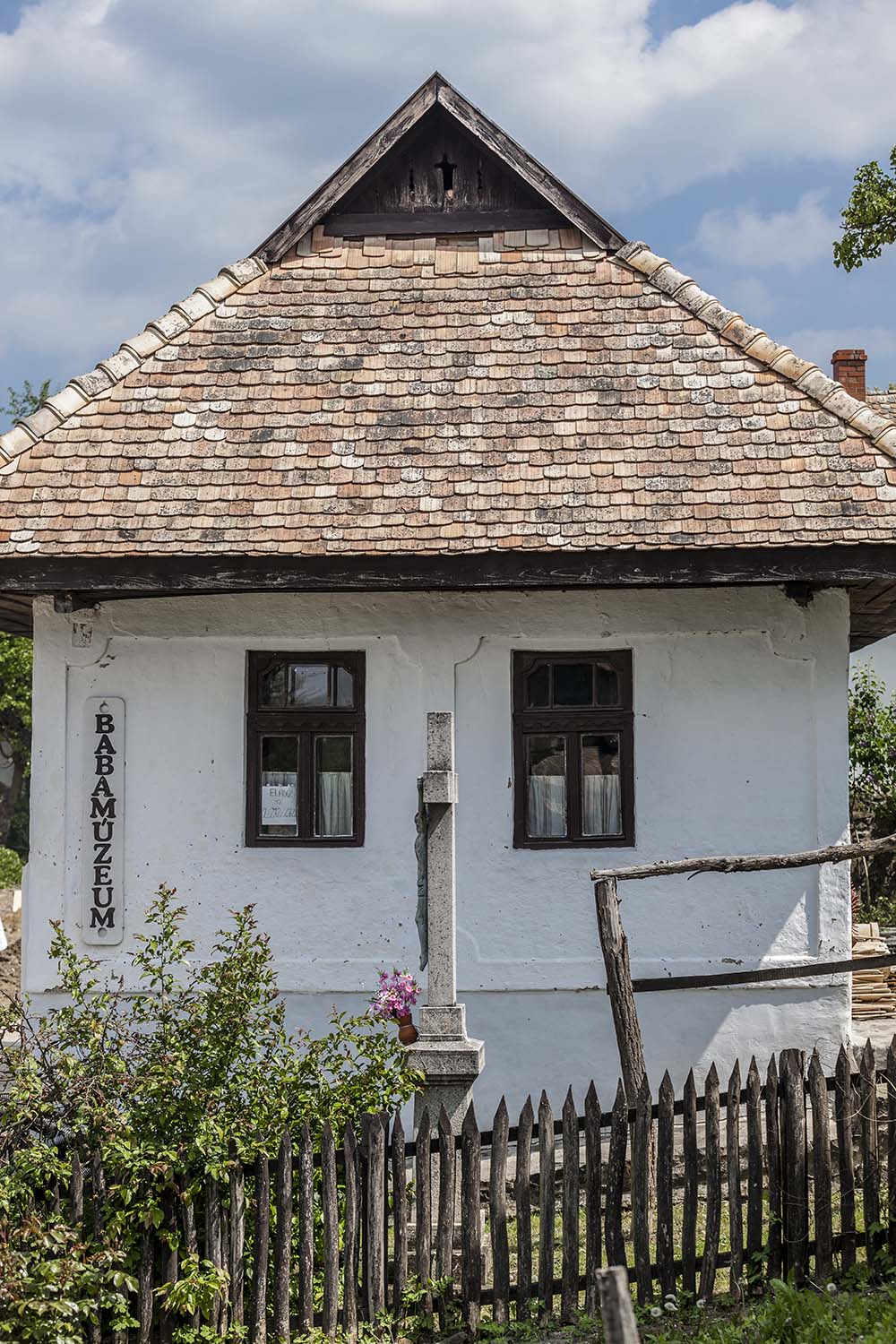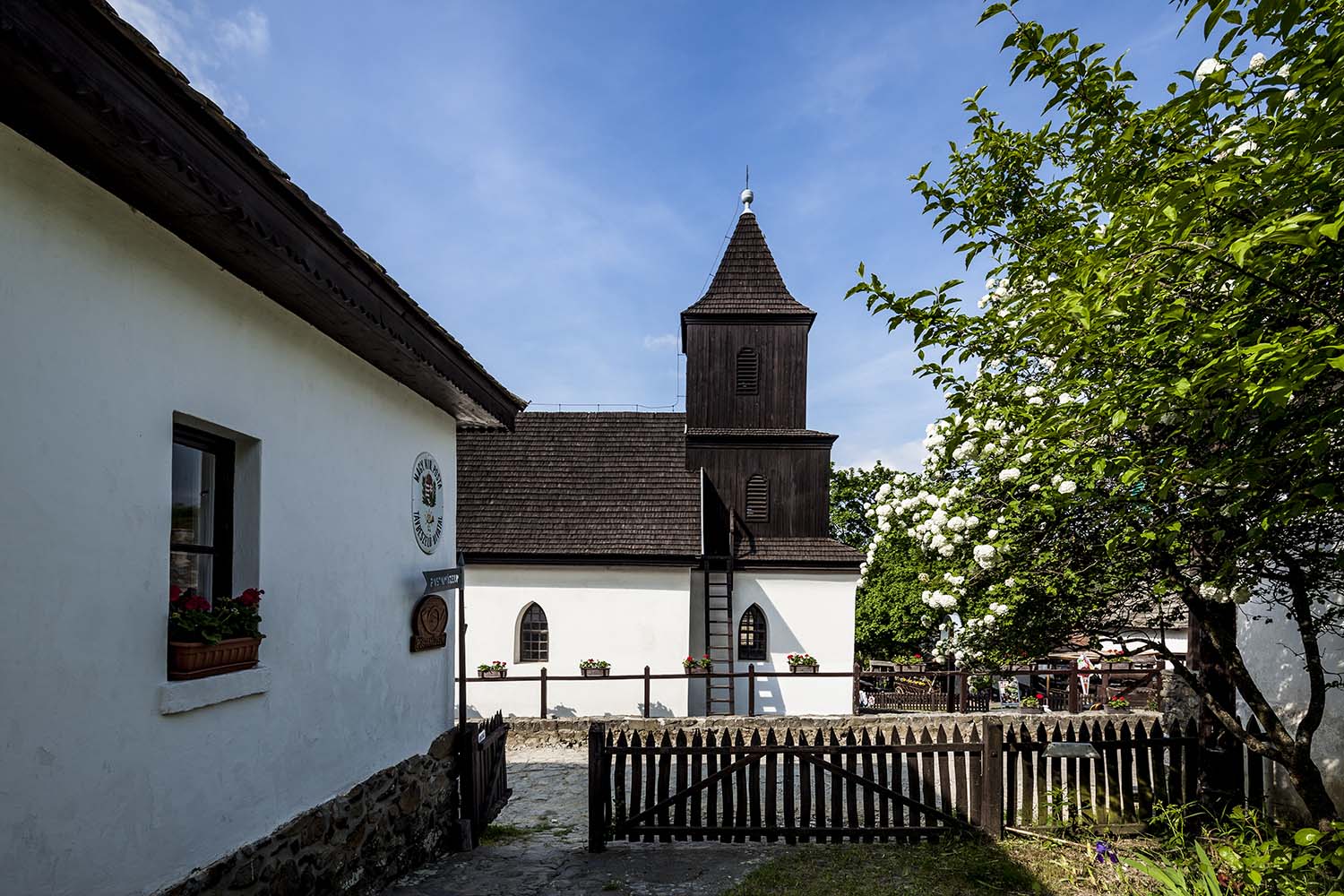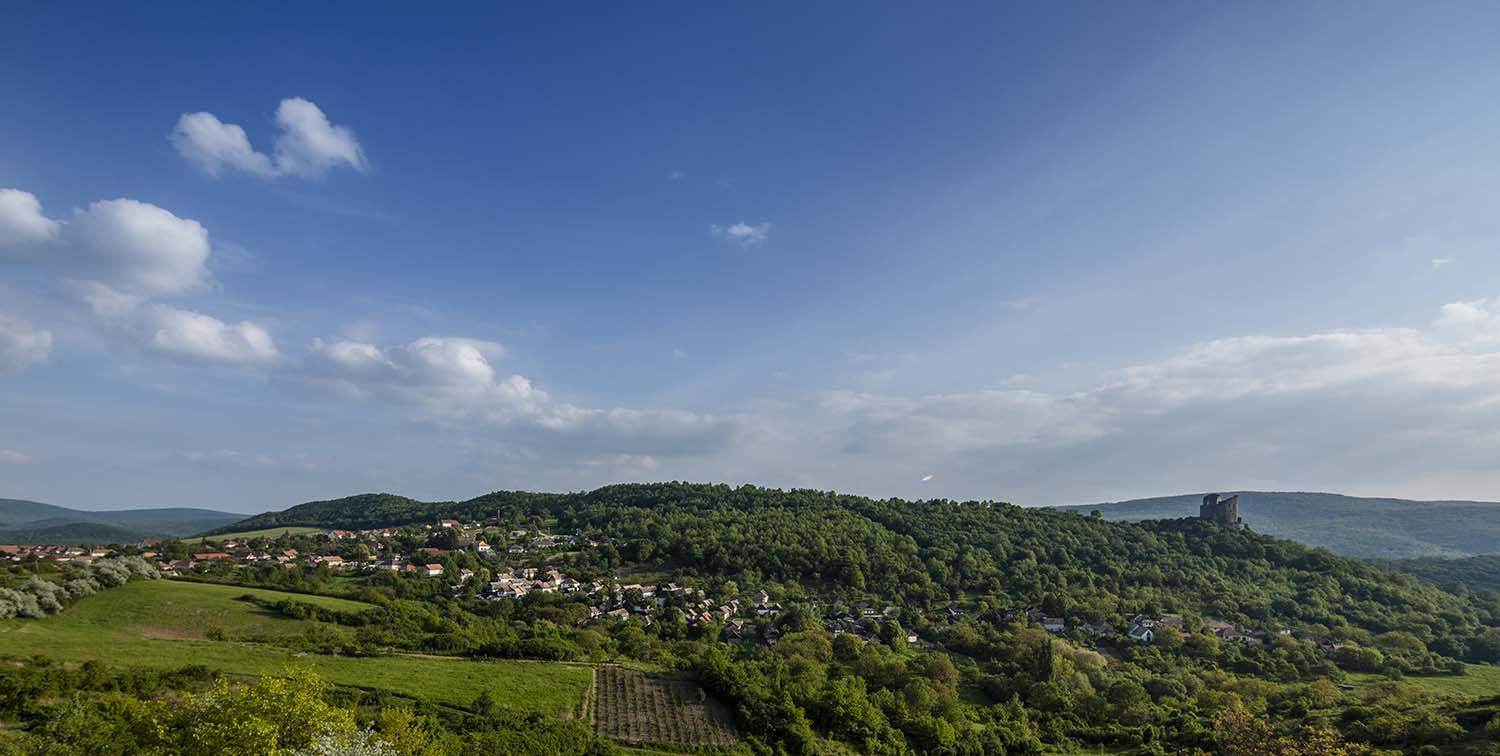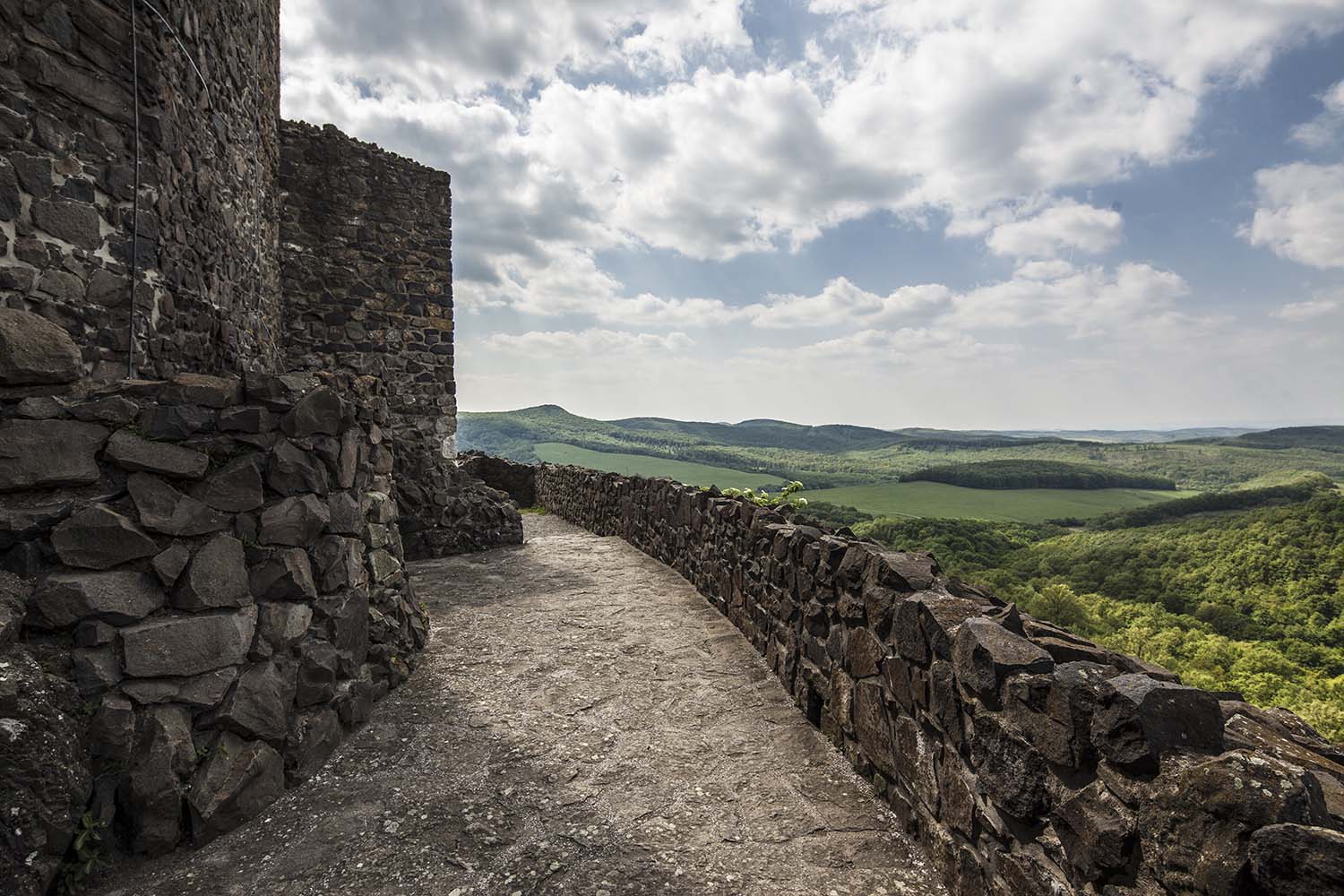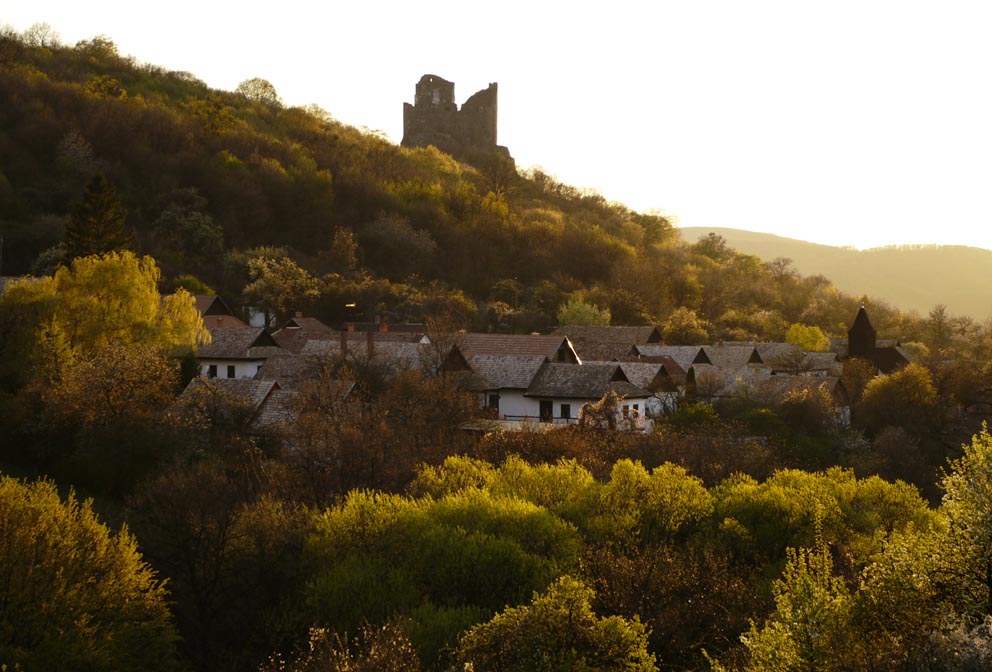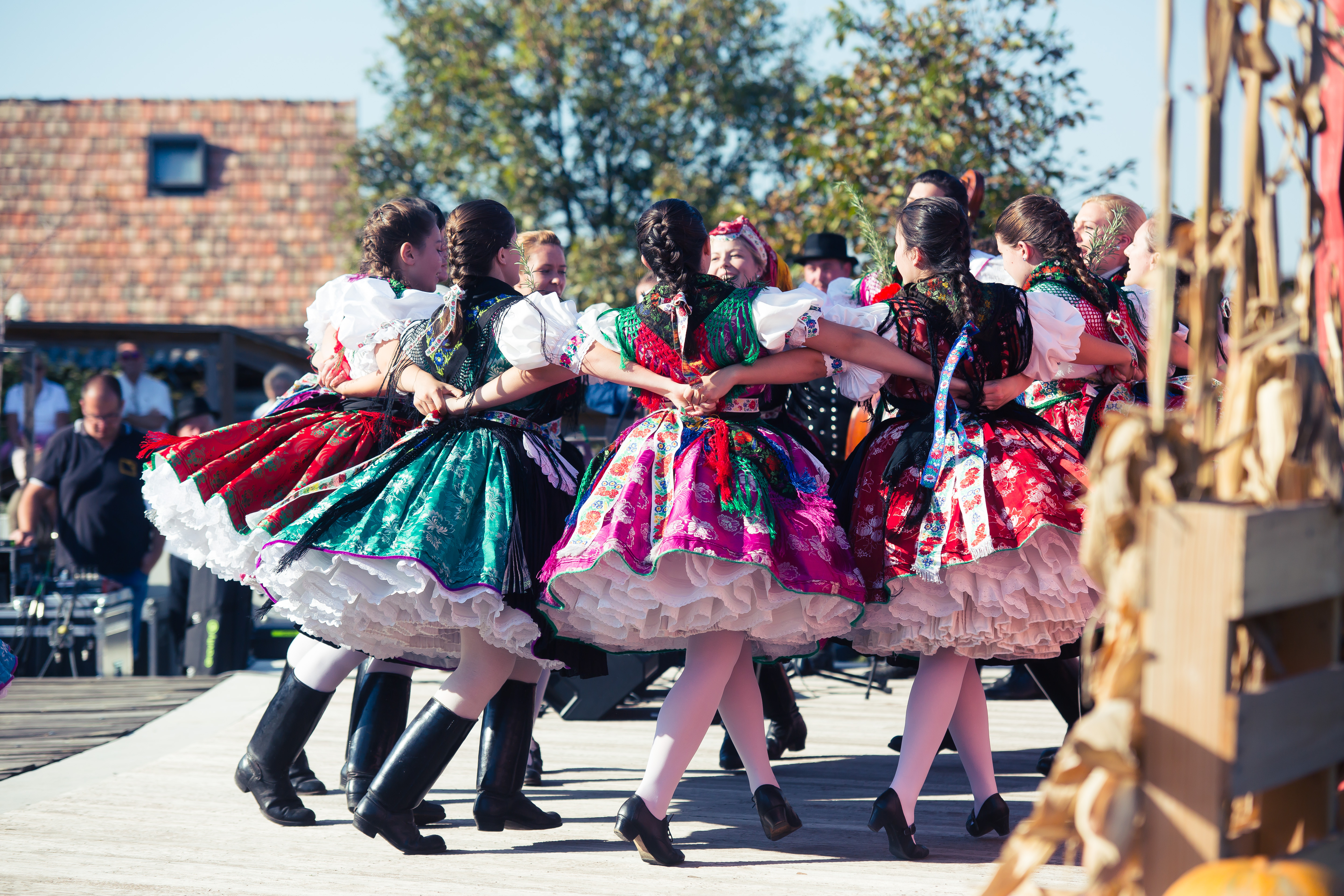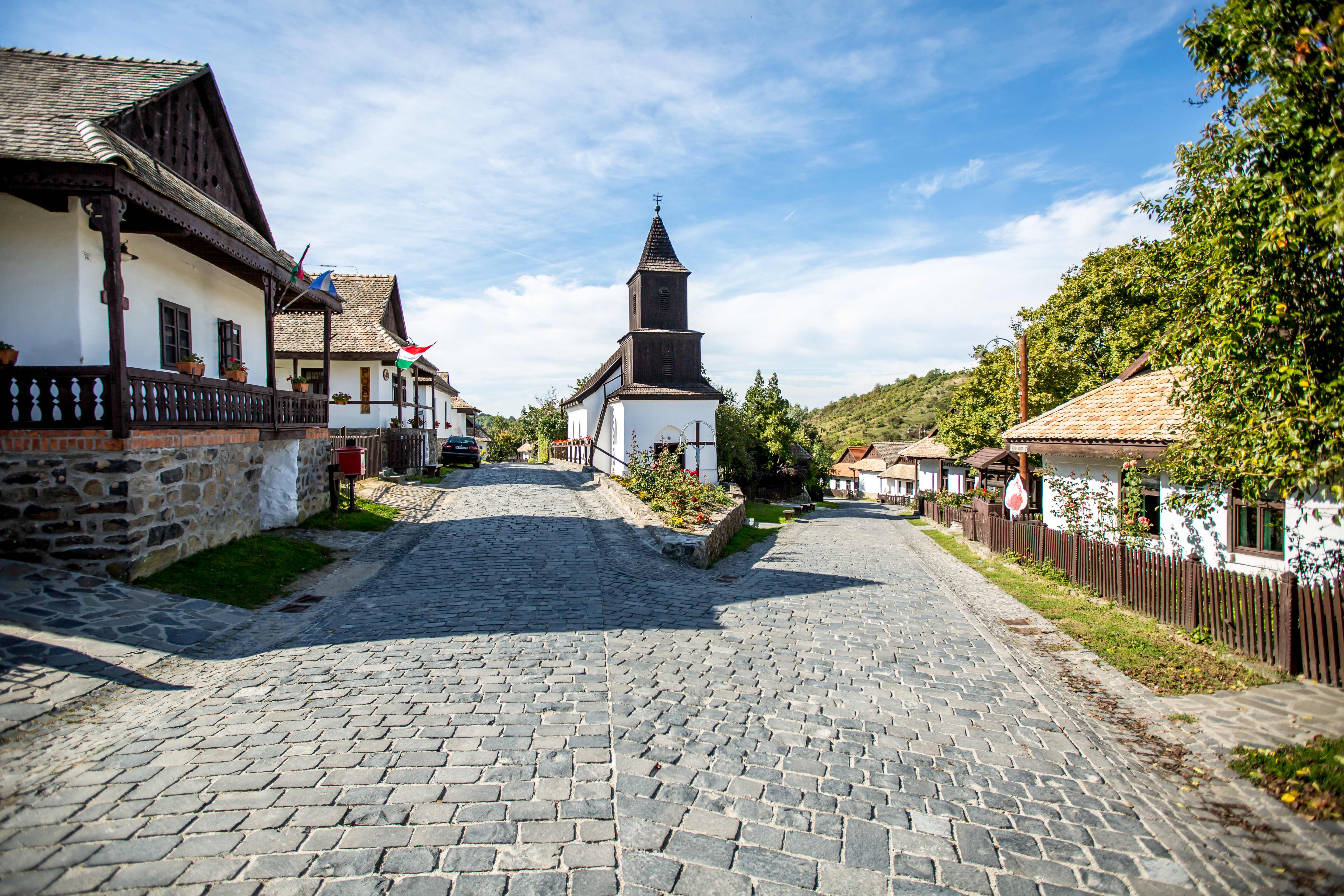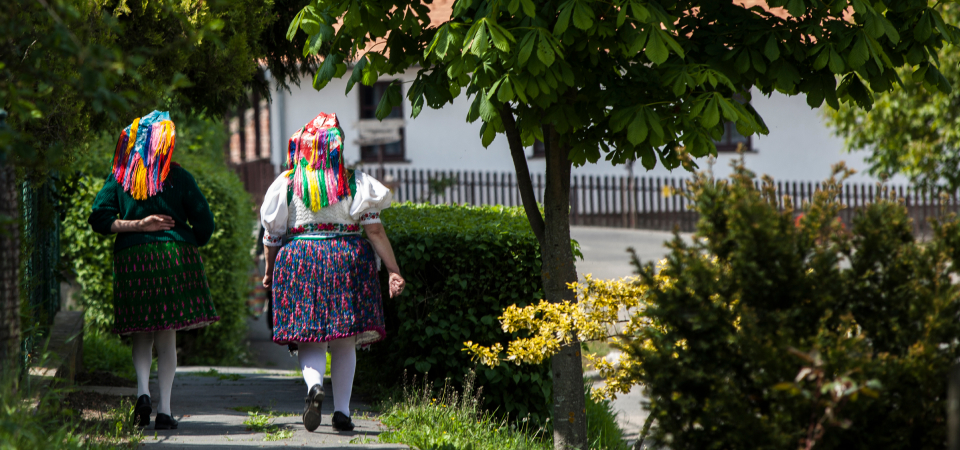
Old Village of Hollókő and its Surroundings
Introduction
The ‘Old Village of Hollókő and its Surroundings’ was inscribed on the World Heritage List as a cultural site by the UNESCO World Heritage Committee in 1987, with the registration number 401rev. Hiding among the hills of the Cserhát as a living example of rural life before the 20th-century agricultural revolution, the Old Village was formed in harmony with the landscape and still preserves its characteristic heritage in the form of the traditional settlement structure, and the folk architecture and traditions of the Palóc people. Today the inhabitants still observe many traditions, so the monument buildings of Hollókő are places for practicing leather craftsmanship, spoon carving, basket weaving, and pottery. On holidays the streets of the Old Village are crowded with people wearing colorful and richly decorated folk costumes.
Gallery
About the Site
The history of Hollókő and the origin of its name are intertwined with the legend of the medieval castle standing upon the hill above the village. According to the legend, the lord of the neighboring Pusztavárhegy, András Kacsics kidnapped a beautiful girl and imprisoned her in his castle. To his misfortune, the girl’s nursemaid was a witch who made a pact with the devil to save the girl. The devil’s sons took the form of ravens and came each night to carry away the stones of the kidnapper lord’s castle bit by bit until he set the girl free. The ravens dropped the stones onto a basalt rock not far away, and thus built the castle of Hollókő. The name of the village translated into English means Raven Stone.
Data is scarce on the medieval village that spreads under the castle. Although 13th-century documents mention Hollókő by its name, archaeological research found that the medieval settlement was not situated in the same location as the current village. While the oldest map of the settlement from 1782 marks Hollókő as a single-street village, a map from 1855 shows the size of old village as the same size as the present one. The current form of settlement developed at the beginning of the 18th century when new communities settled in the abandoned areas of the country during the Ottoman conquest. A document from 1720 refers to the settlement as a “village with noble privileges”. The settlement was devastated by fire multiple times as the houses – against the prohibition of the county decree of 1783 – were made of wood without foundation, the roof was covered by easily flammable thatch, and the smoke from the open hearth could only escape through narrow smoke holes instead of a chimney. The last big fire in 1909 marked the turning point in the design of the housing type that defines the present-day village of Hollókő. The houses, now with adobe walls and raftered carpentry, were built on stone plinths and covered with shingle or tile roofs. The planked gable roofs hark back to the traditional tent roof with the smoke holes.
Situated in the centre of the settlement of almost 400 inhabitants the old village, with a total of 67 protected buildings, acquired its present-day appearance, both in the atmosphere of the pre-Century period and the traditional folk architecture of the Palóc people by 1911. The houses there are typically one-story peasant homes with whitewashed walls, hipped gable roofs, and porches (‘hambitus’) running along the façade facing the street and the yard, decorated by openwork carvings on wood pillars and planked parapets. Palóc houses traditionally had three separate areas: the kitchen was accessible right from the porch, on one side opened the living room facing the street, and on the other side towards the yard was the chamber where originally grain was stored, but later functioned as a regular room. Traces of the traditional peasant lifestyle are not only present in the Old Village, but also in the landscape surrounding it. The long strips of land parcels on the hillsides, the orchards, vineyards, the former wooded pastures around the castle, the barns standing at the edge of the lands and the peasants’ bath in the stream valley are all testimonies to the harmonious coexistence of village community with the landscape.
Characteristic of the Palóc region, Hollókő is a single-street, ‘comb-structured’ village defined by the parallel rows of houses standing on narrow strips of land on both sides of and perpendicular to the central road. As customary to the Palóc settlements, multi-generation families traditionally built their homes on the same plot of land and as the family grew, they simply built a new house behind the first one facing the main street, effectively creating new streets after a time. Standing at a temporary branch-off of the main road is the emblematic building of Hollókő that defines the village image. The symbol of Hollókő, the dominant element of the village's skyline, is the small shingled Roman Catholic church with a turreted tower, built by the villagers in 1889 from public donations.
Hollókő is a living village. Its community finds opportunities for social interaction and religious practice in the Old Village, as well as for carrying on and showcasing their traditions. The villagers still observe the majority of the Hollókő traditions. There are customs for Easter, Pentecost, grape harvest, and the harvest of grains among other holidays, and also for regular days. At festive times, they wear special hand-woven and embroidered folk costume. Men wear tight black pants with boots and a white linen shirt, tie a sash around their waist, and put a round-crowned hat with an upturned brim on their head. Women put on as many as 15-20 ironed petticoats under their beautiful silk or cashmere skirt, over which they tie a richly embroidered apron. They wear a lace blouse with a shawl fringed by ornate tassels. The festive attire also includes a richly embroidered vest. The most spectacular accessory of the Palóc girls is the bonnet, over which married women wear a fringed silk scarf.
Hollókő is a living example of a rural lifestyle that respects nature and tradition, an authentically preserved slice of the past, making it one of the most valuable cultural treasures of the Hungarian nation.
Map
Map delimitation of Hollókő Old Village and its surroundings as a World Heritage Site.

Outstanding Universal Value
The Outstanding Universal Value of the ‘Old Village of Hollókő and its Surroundings’ world heritage site is defined by Decision 37COM 8E (2013) of the UNESCO World Heritage Committee. The consciously preserved Old Village is a living example of rural life before the 20th-century agricultural revolution. The traditional forms and materials of the Palóc architecture are in harmony with the natural and landscape environment defined by cultivated strips of land, orchards, vineyards, pastures and forests. The shingled church building of the village is a recreation of the vernacular architectural style. The lively community of Hollókő is a unique and special example of the voluntary preservation of a traditional village at its original location.
The attributes expressing the Outstanding Universal Value are the following: the harmonizing image of the Old Village with the natural and landscape environment; the traditional settlement and landscape structure; the landscape environment with wooded pastures, narrow land parcels and gardens characteristic of traditional agriculture; the location of the medieval castle defining the landscape; the historic land structure of the Old Village, the characteristic ‘comb-structured’ village; the unity of traditional Palóc architectural forms and materials, ornamentations; the traditional lifestyle and culture preserved and showcased.
The inscription of the site on the World Heritage List is justified by its adherence to Criterion (v).
-
Criterion (v)
The Old Village of Hollókő is an outstanding example of a deliberately preserved traditional settlement, representative of a culture that has become vulnerable under the impact of irreversible change. This village, which developed mainly during the 18th and 19th centuries, not only represents the Palóc subgroup within the Hungarian nation but also bears witness, for the whole of Central Europe, to the traditional forms of rural life which were generally abolished by the agricultural revolution in the 20th century.
Contact
Hollókő Község Önkormányzata
Address: H-3176 Hollókő, Kossuth út 74.
E-mail: onkormanyzat@holloko.hu
Phone: + 36 32 379 255
www.holloko.hu
